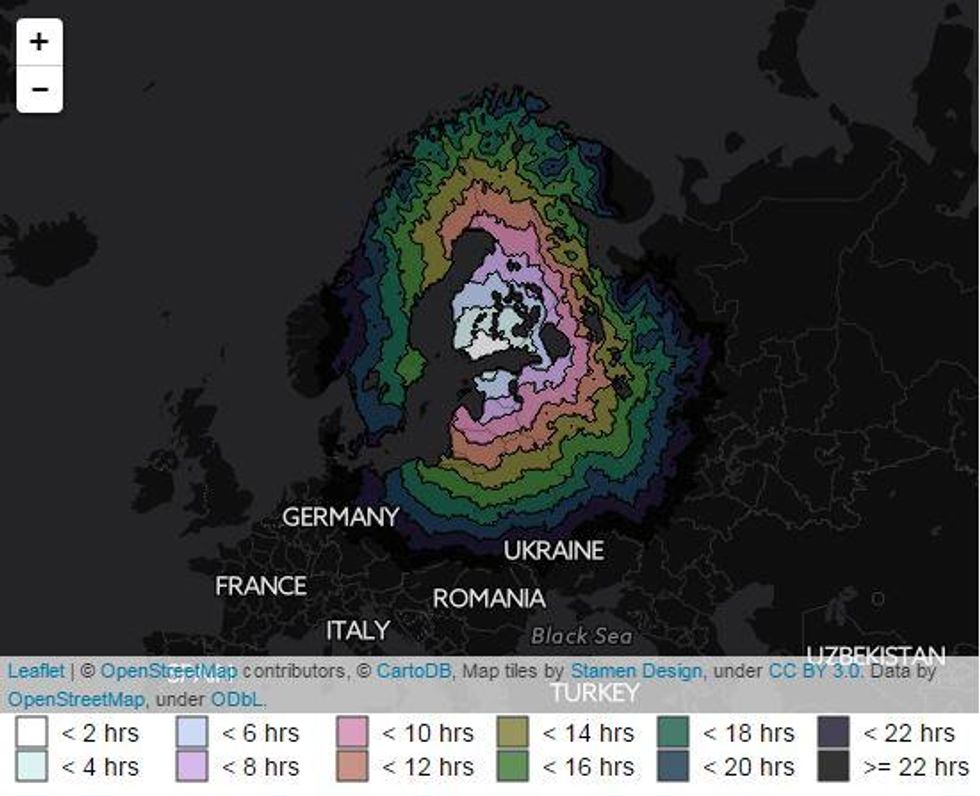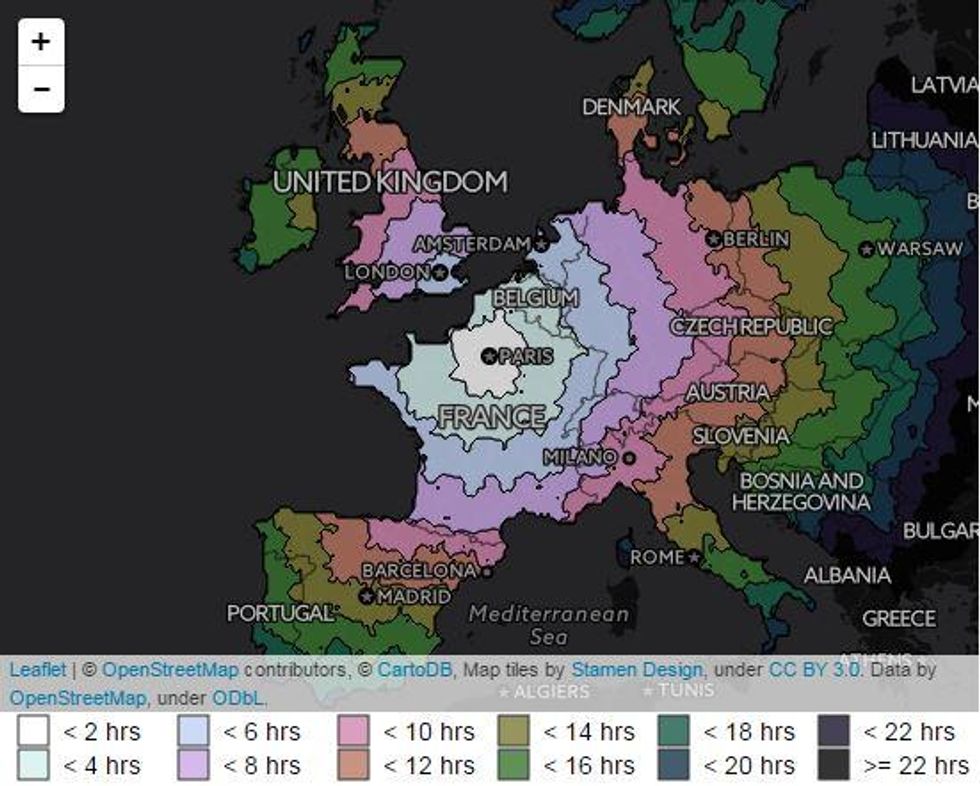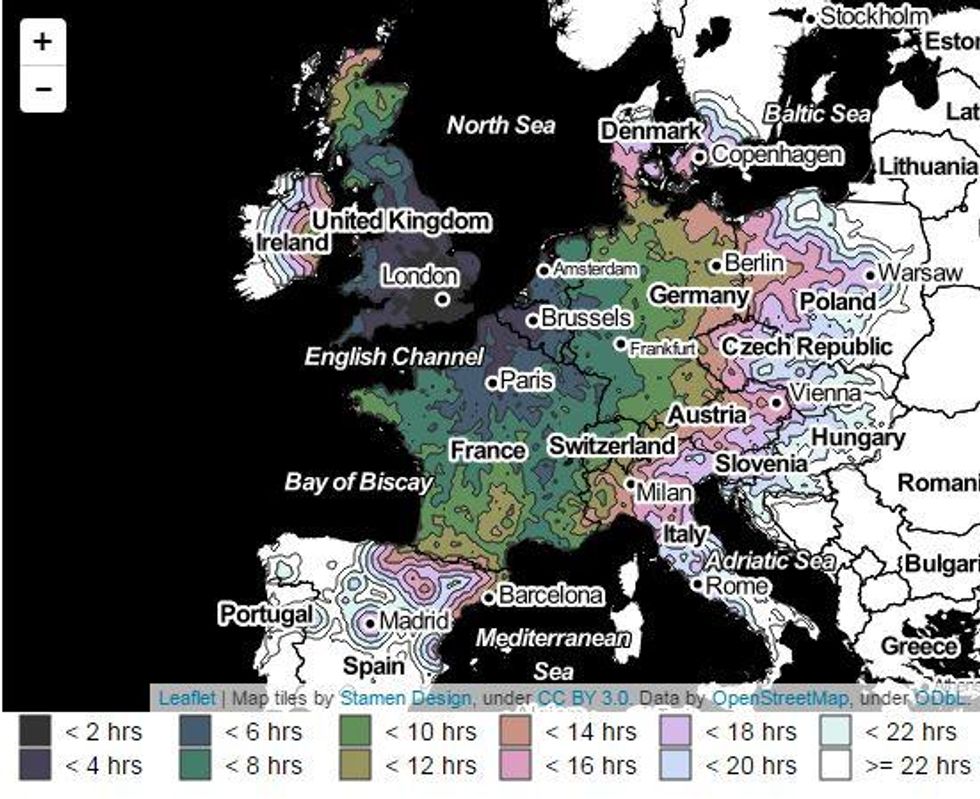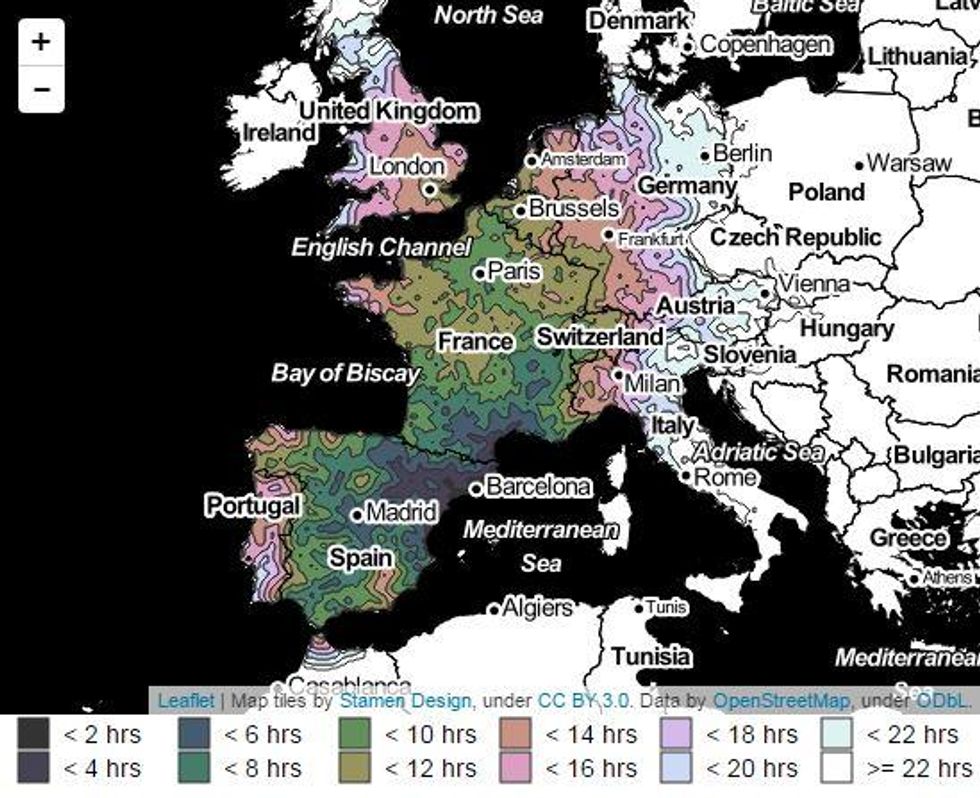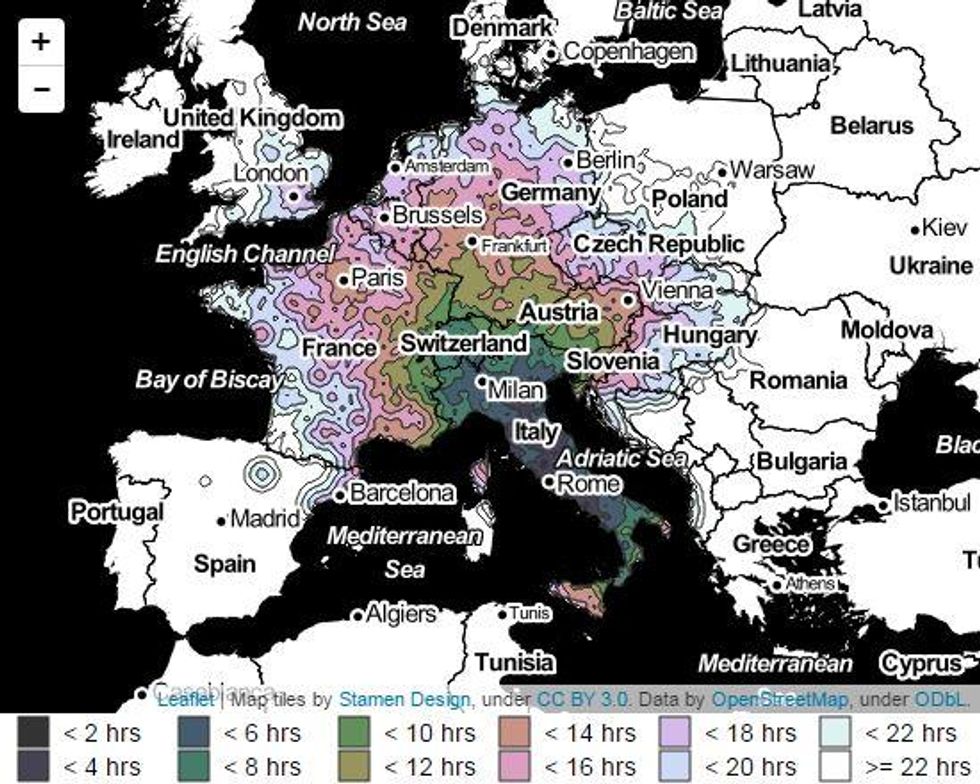Viral
Louis Dor
Dec 01, 2016

Picture:
Peter Kerpedjiev
Peter Kerpedjiev, a postdoctoral fellow at Harvard, made some beautiful isochrome maps of driving times to locations from different points around Europe earlier this year.
The maps told viewers, using data from roadmap and travel time databases, how long it would take you to travel by car to certain points, from various major cities.
London:
Berlin:
Barcelona:
Bratislava:
Copenhagen:
Helsinki:
Geneva:
Madrid:
Paris:
As you can see, they were pretty cool.
Now, Kerpedjiev has done the same for the public rail networks, factoring in the time it takes to walk to stations or to platforms.
These are arguably more interesting and detailed, given the restrictions of a railway compared to the freedom of a car on the road.
If you click the links on the subheading, you'll visit each individual map on which you can zoom in and out in great detail.
London:
Madrid:
Paris:
Helsinki:
Geneva:
Barcelona:
Rome:
Kerpedjiev made the maps with the Swiss public transport API to get travel times to other cities. He then factored in the fastest way to get to a station assuming a five minutes per kilometre walking pace and the maps were made with d3 and leaflet.
He said his motivation was an isochrome map of travel from Vienna around 1881, as he wanted to update the concept for the modern day:
Having toyed with the idea of plotting travel times by train in a previous post, it made me realize that contour lines are a much better way of presenting the information.
Relying on shades of a color makes it difficult to distinguish difference between disparate points on the map as well as to convert to an absolute value.
Questions such as 'how much darker is point A than point B?' and 'what actual time does a particular shade correspond to?' are resolved using the interactive maps (i.e. Vienna, Paris, London, Berlin), but these fail to provide the information at a mere glance.
Kerpedjiev recommends, for the optimum speedy trip, starting in London, Brussels or Paris and exploring those by high speed rail, before heading to Geneva on a TGV, then heading on a sleeper train to Paris, Vienna, Prague or Cologne - if you're up for a bit of interrailling.
Kerpedjiev is a postdoctoral fellow at Harvard Medical School, previously a PhD student at the University of Vienna in Austria where he worked on modelling the tertiary structure of RNA molecules.
You can follow him on Twitter too.
All images courtesy of Peter Kerpedjiev.
HT MailOnline
More: The beautiful maps that show all the roads leading to Rome
Top 100
The Conversation (0)





